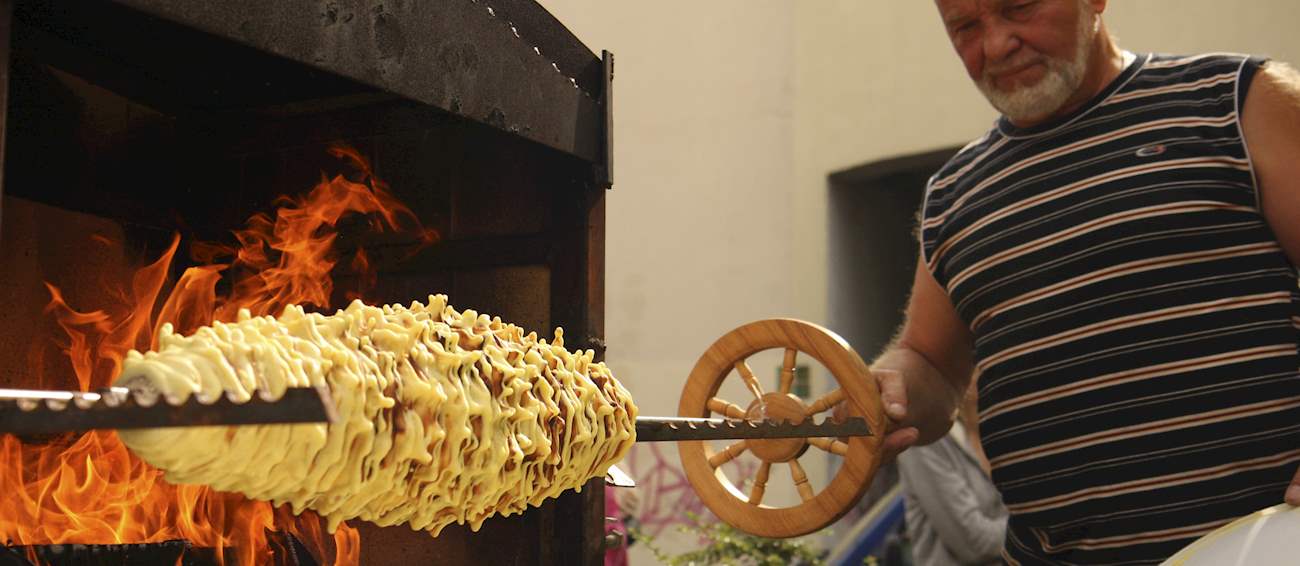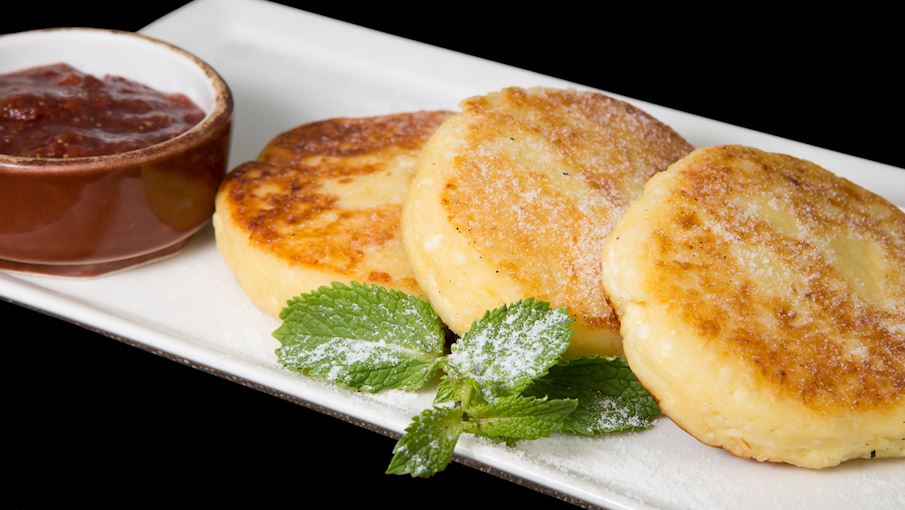Syrniki is a dessert consisting of fried cottage cheese pancakes that are usually garnished with honey, fruit jam, sour cream, or applesauce. It is part of the Russian (where it's sometimes also called tvorozhniki), Belarusian, Ukrainian, Latvian and Lithuanian cuisine.
Cottage cheese is traditionally first swetened with sugar, then combined with flour into a dough which is fried in hot oil until it develops a golden-brown color. Syrniki can be served for breakfast or consumed as a tasty dessert after a large meal.
MAIN INGREDIENTS
Known as sękacz in Poland, šakotis in Lithuania, and bankucha in Belarus, this famous tree cake is a vital part of traditional Polish, Lithuanian and Belarusian cuisine. Prepared with a thick batter which is repeatedly poured over a rotating horizontal spit, the cake is often slowly baked in the oven, or more traditionally–over an open fire.
During baking, the creamy egg batter slowly drips on the sides, creating a recognizable shape of this sweet treat. Although commonly regarded as the same cake, sękacz, šakotis and bankucha share some differences. The sękacz is usually described as the softer, more delicate version, while šakotis and bankucha tend to be denser and more decorative.
MAIN INGREDIENTS
Kutia is a Ukrainian, Russian, Belarusian, and Polish sweet grain pudding that is traditionally served as part of a twelve-meal Christmas Eve supper. Interestingly enough, this festive treat is believed to have existed long before Christianity.
It is made with wheat, berries, honey or sugar, nuts, raisins, and poppy seeds. On Christmas Eve, before consuming the dish, a small bowl of kutia is traditionally placed outdoors as a bribe to Father Frost, then some of the kutia is tossed to the ceiling, and the number of grains that stick to the ceiling are used to predict next year's agricultural prosperity.
TasteAtlas food rankings are based on the ratings of the TasteAtlas audience, with a series of mechanisms that recognize real users and that ignore bot, nationalist or local patriotic ratings, and give additional value to the ratings of users that the system recognizes as knowledgeable. TasteAtlas Rankings should not be seen as the final global conclusion about food. Their purpose is to promote excellent local foods, instill pride in traditional dishes, and arouse curiosity about dishes you haven’t tried.












